If your only experience of Matera is from photos or travel shows it’s easy to think that the ancient part of the city, the Sassi, is all that there is to Matera, and sure that is spectacular. But the historical parts of the city located on the flats above the Sassi areas are worth the visit all on their own. Though not as “ancient” as the Sassi, structures here date to Roman times with fascinating architecture all the way through the Renaissance. Narrow white stone lanes and ancient squares are now homes to great bars and restaurants. An undeniable old world beauty surrounds you.
The cliffsides and flats opposite the city have been made into a national park and include examples of ancient cave churches filled with Byzantine style frescos and are peppered with ancient cave dwellings which remain as they would have been thousands of years ago.
Historic Town Center
The Historic Town Center is the area of town on the flats or piano above the sassi canyons. The major churches and buildings here typically date between the 12th and 18th centuries and contain a mix of Apulian Romanesque, baroque and renaissance styles. The most prominent among them is the Matera Cathedral (Basilica Pontificia Cattedrale di Maria Santissima della Bruna e Sant’Eustachio) dedicated to the city’s two patron saints. You’ll also find lots of restaurants, bars, and cafes in this area. The central most part of this area, what I would consider the main town square, is Piazza Vittorio Veneto which features a recently discovered enormous Roman cistern, views into the Sasso Barisano, and a great jumping off point for exploring the piano.






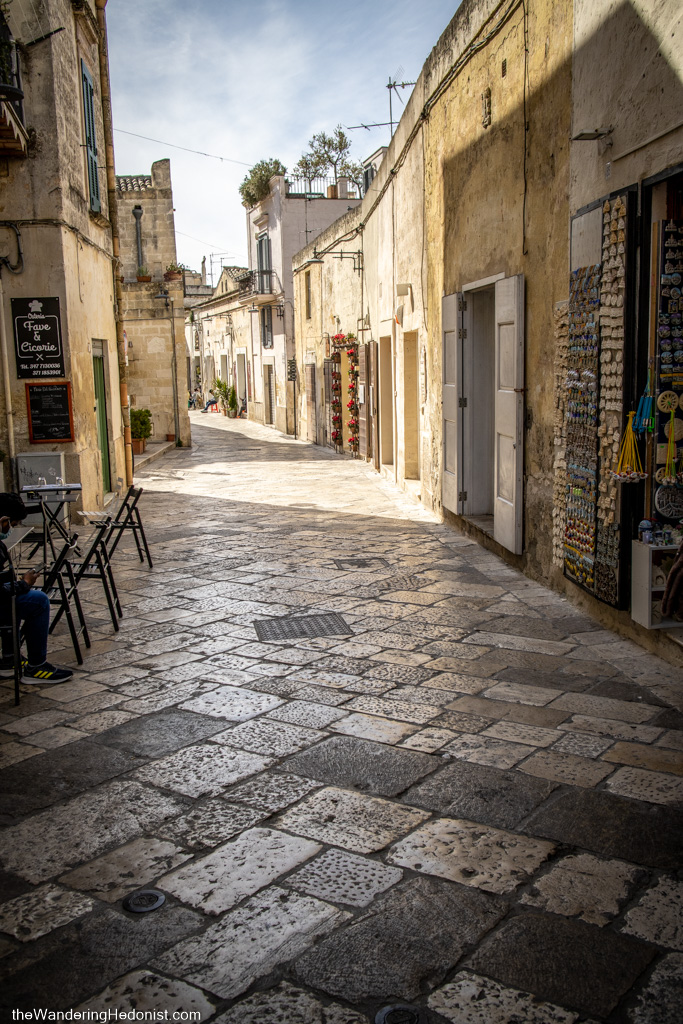


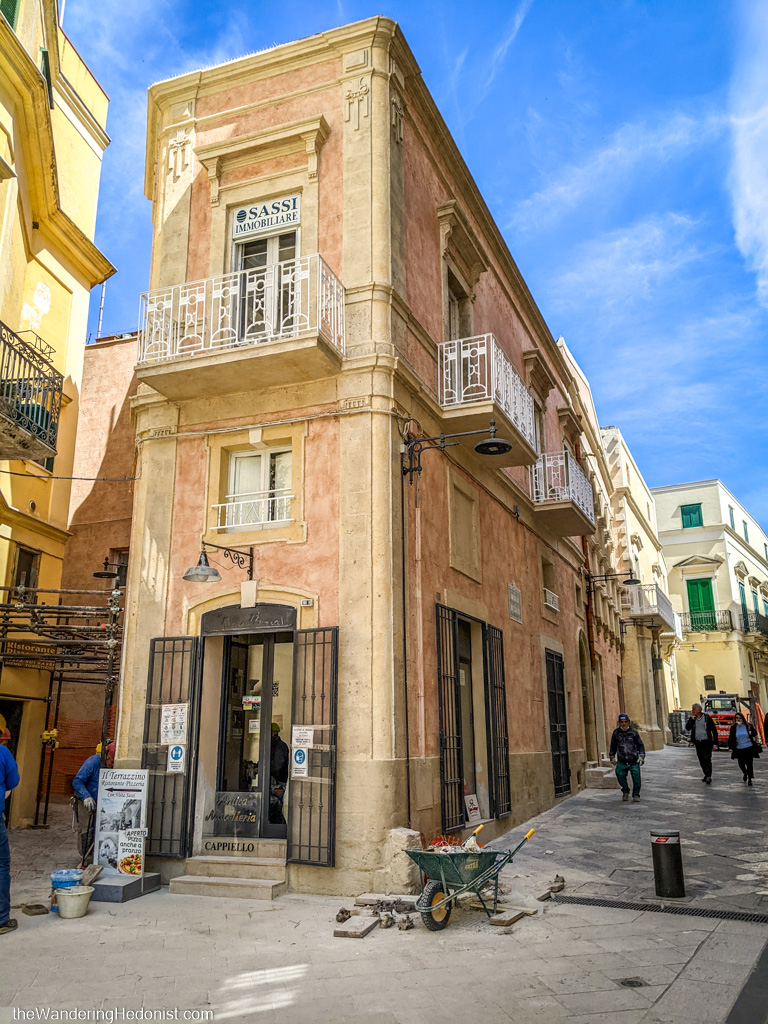
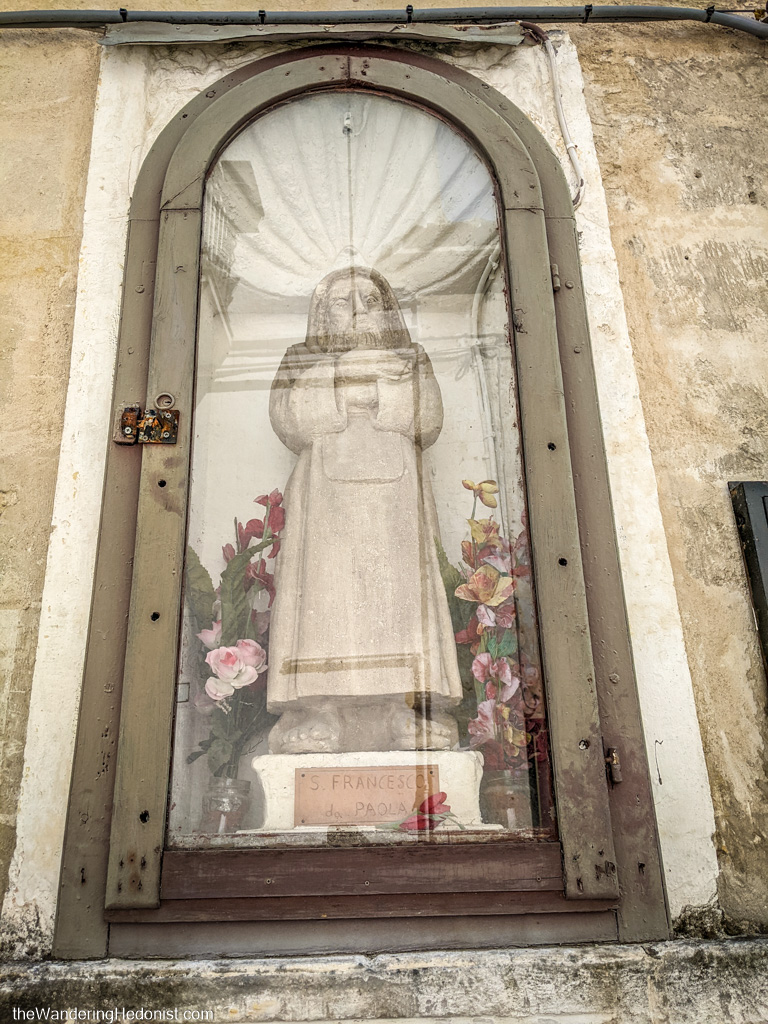
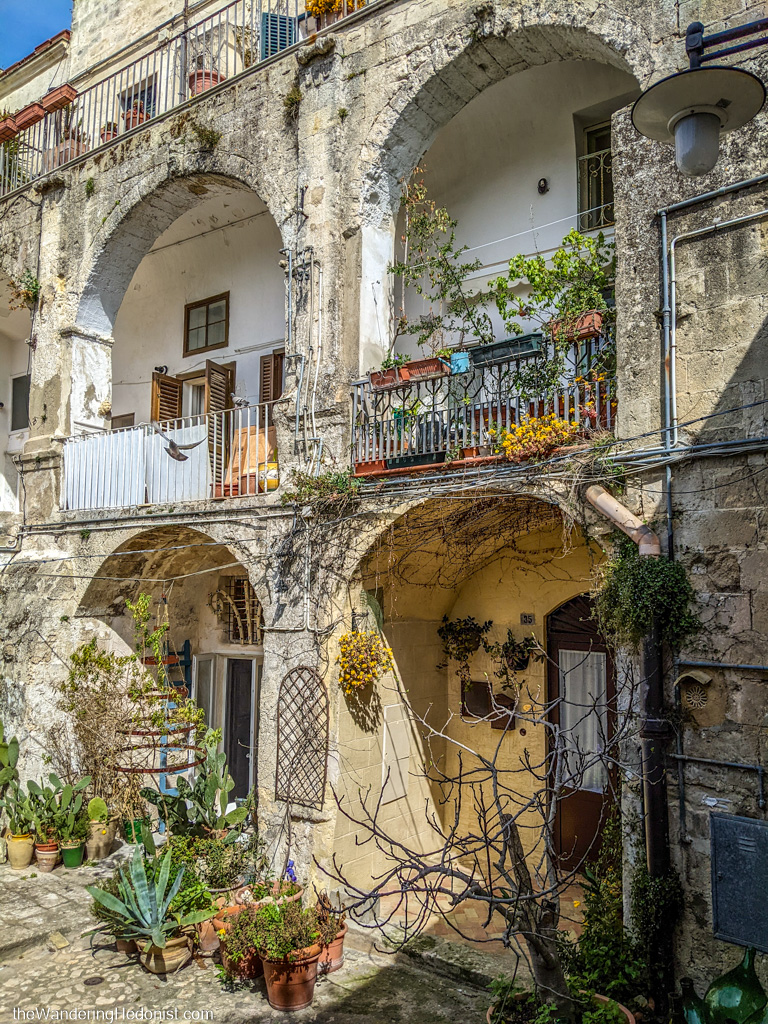
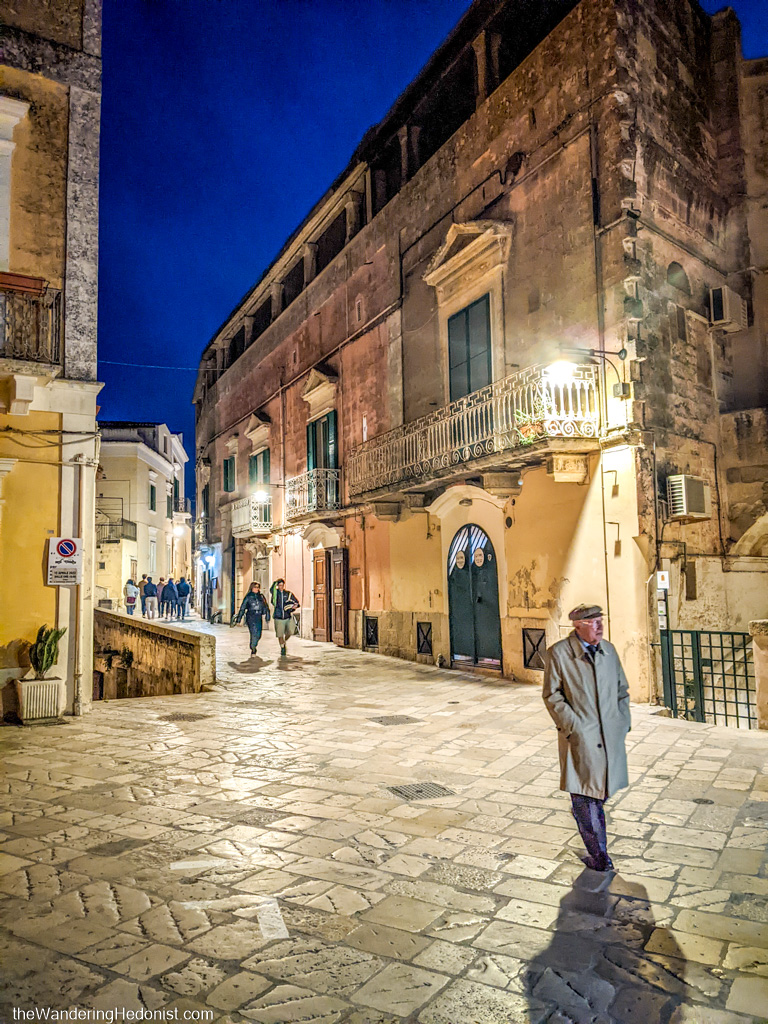
Chiesa di San Giovanni Battista
If you walk to the left of the main town square along the Barisano edge you’ll come to the piazza San Giovanni Battista named for the church of San Giovanni Battista, a perfect example of the Apulian Romanesque style. Originally a Benedictine order called the chapel of Santa Maria la Nova, in 1212 it was gifted to penitent nuns of Santa Maria di Accon from the Kingdom of Acre in the Holy Land who occupied it until it was abandoned in 1480 during the Ottoman invasion of Otranto.
Inside you can find examples of the Lecce Vault which is found almost exclusively in the area for Baroque constructions, an adaptation to the porous stone of the region.
You might notice the square from the latest Bond film where Daniel Craig blasts the bad guys with machine guns from his Aston Martin while doing doughnuts.




Chiesa di San Francesco d’Assisi
If you walk right from the town square towards the cathedral, you’ll pass by the Piazza San Francesco with several churches nearby. The square takes its name from the baroque church of San Francesco d’Assisi. This modern church sits atop a much more ancient subterranean cave church dedicated to Saints Peter and Paul which can still be accessed via trap door within a chapel. Inside you can find a fresco depicting Pope Urban II’s visit to Matera in 1093. The modern church building has been expanded many times with the first structure originating in the 1200s, enlarged in the 1400s, and in the 1700s acquiring its baroque façade.
Chiesa del Purgatorio (Church of Purgatory)
Only a few meters away from the Piazza San Francesco you will notice the unmistakable Church of Purgatory, built between 1725 and 1747. The original seat of the ecclesiastical community was located at the bottom of the Caveoso and this site was chosen along the Piano for easier access. The local community however was at that time obsessed with death and the concept of purgatory. There was a local influential cult, the Cult of Souls in Purgatory, along with the Brotherhood of Death, who were instrumental in the many visual depictions of death included in the façade and within the church. And the Orsini family which included the active pope of that time, Benedict XIII (a family that had produced 5 popes and 34 cardinals), personally requested the church be dedicated to the dead.
Cattedrale di Maria Santissima della Bruna e Sant’Eustachio
The Matera cathedral is built along the ridge that divides the two Sassi regions and can be seen from any point within the Sassi. It is easily the most prominent structure in the city. The cathedral was built upon the former Church of Saint Eustace (the town’s patron saint) in 1203 when the Pope raised the city to an archdiocese, and completed in 1270, built in the Apulian Romanesque style. The cathedral was dedicated to Santa Maria della Bruna, the town’s protector, who can still be seen in the original church frescos, and later also to Saint Eustace.



Food
The food in Matera is similar to other southern Italy locations but it has its specialties. There’s a local dried red pepper (peperoni cruschi) that’s commonly added to pasta and vegetable dishes which is pretty mild but flavorful. You start to see more fava beans over cannellini beans. A popular side dish is fave e cicoria, a fava bean puree mixed with a local bitter green. Local pasta made with grano arso, the local flour, is generally orecchiette or cavatelli and sometimes you’ll get a mix of the two along with strascinate as a trio, usually with a tomato-based sauce topped with dried peppers. The town is known their local bread which is baked in gargantuan mutant loafs that are larger than a toddler with odd imperfect lumps and protuberances, a crunchy exterior and soft almost spongey center. For a main course you can try the pignata, usually lamb and vegetables sealed in a ceramic pot and baked. Horse meat is also popular in southern Italy and you’ll find it on menus as prime cuts or in sausage. But our favorite discovery was the local sandwich called a pucce or puccia, which is essentially pizza dough formed into a disc or square, baked till crispy, split, and then prepared like a sandwich with local often fresh cheeses and cured meats. The pizza tends to be of the focaccia variety. The local wine is aglianico, usually earthy and full bodied, and is delicious but hard to find outside of the region or try the primitivo di Matera.
I ended up cooking most of our dinners in Matera and enjoying a pucce for lunch while out. I made my first Neapolitan ragu and lots of meat stewed in sauce with pasta usually with a cicoria ripassata.

Antica Trattoria Lucana
We happened into this Michelin recognized trattoria on our first night in town, mostly because it was only a block away from our apartment. We arrived 15 minutes before opening only to discover a long line waiting outside. But we were seated quickly. A great family style interior. Delicious food. They brought us these fried bread balls as a free treat.



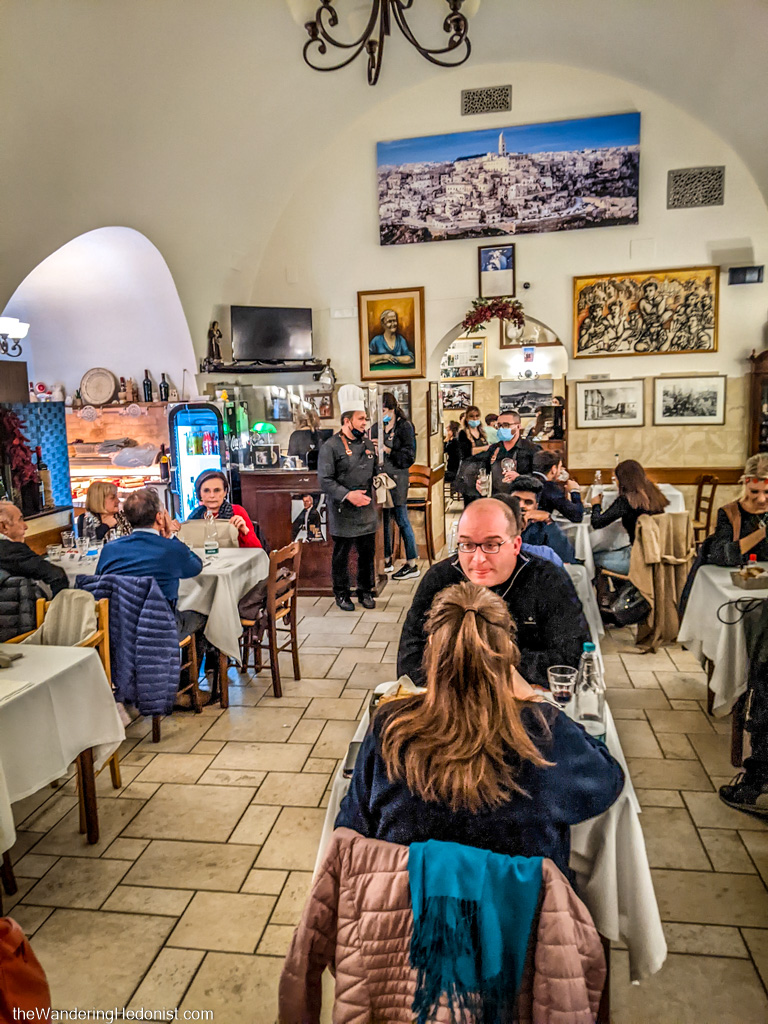
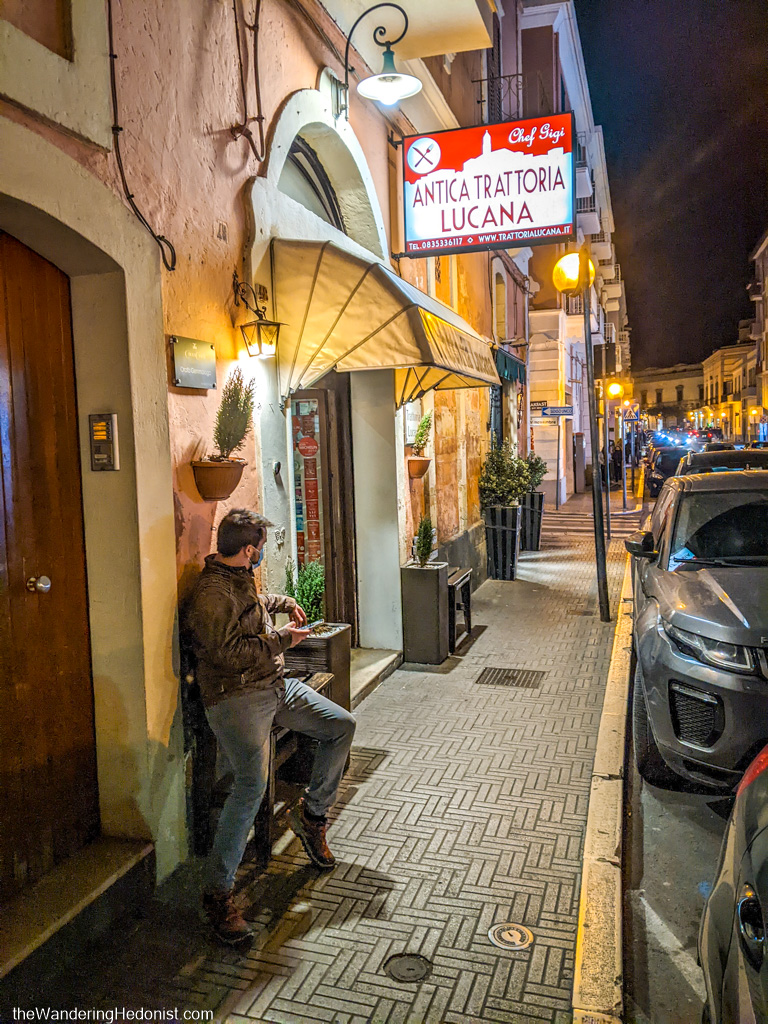
Murgia National Park
Though the Matera side of the canyon has developed into a dense city, the cave structures that cover the opposite cliffsides remain as they would have been in ancient times. Mostly open portals into rounded hand-dug spaces. The entire opposite canyon-side along with their flats is now incorporated into a National Park to preserve the cave structures and the many cave-churches that populate the landscape. There’s a trail down into the canyon to a narrow suspension bridge with trails leading back up the other side which Katy did hike a few times. But with my injured calf I decided to book a quick tour over to the flats for a short walk around and to see the views of the city. If you have some time, you can easily spend the day climbing around on the cliffside trails exploring the many rock churches and investigating the cave houses.
Easter Procession
We were lucky enough to end up in Matera over easter. This included the annual easter procession where sacred figures from the Chiesa di San Biagio are carried through the city to stations of the cross and prayers are said by the group that follows the procession at each station.
Ape Tour!
If you know me, you know I love little cars, and especially the Piaggio Ape. And it will be hard to miss the local tour of choice, the Ape tour of the Sassi. The roads are so tiny this little car is the perfect choice for slipping through the mostly pedestrian areas. It was a bit of an indulgence but with my injured leg it was a great way to get in the miles I couldn’t walk and see the further side of the city. I highly recommend booking one. It was a blast.





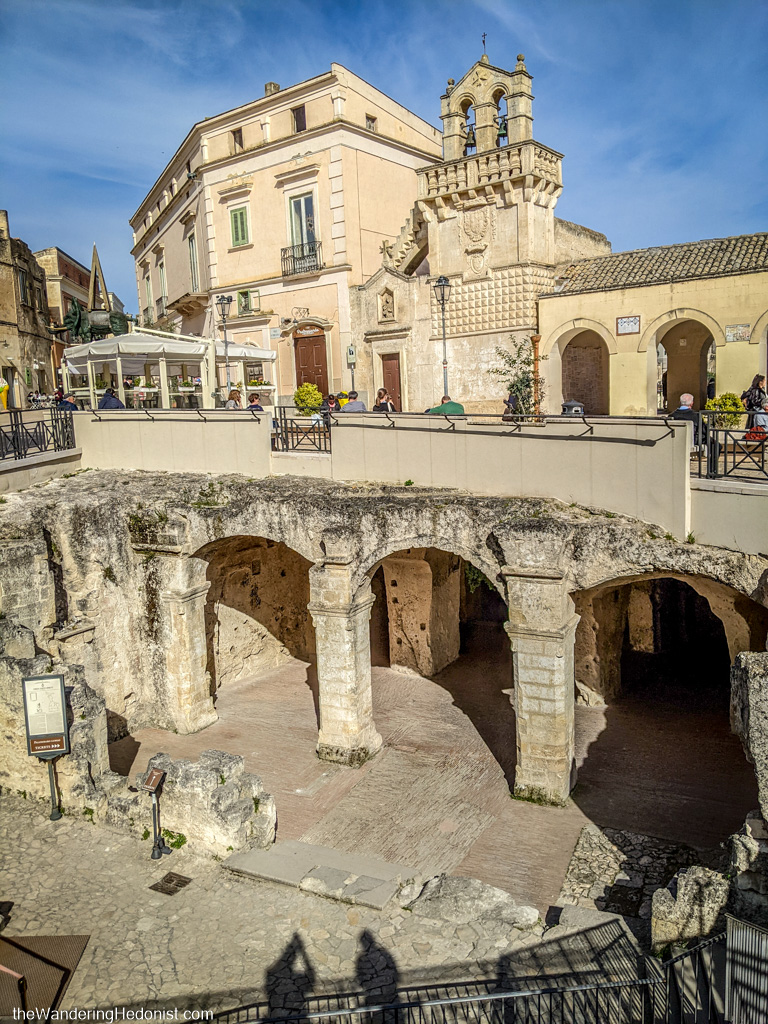








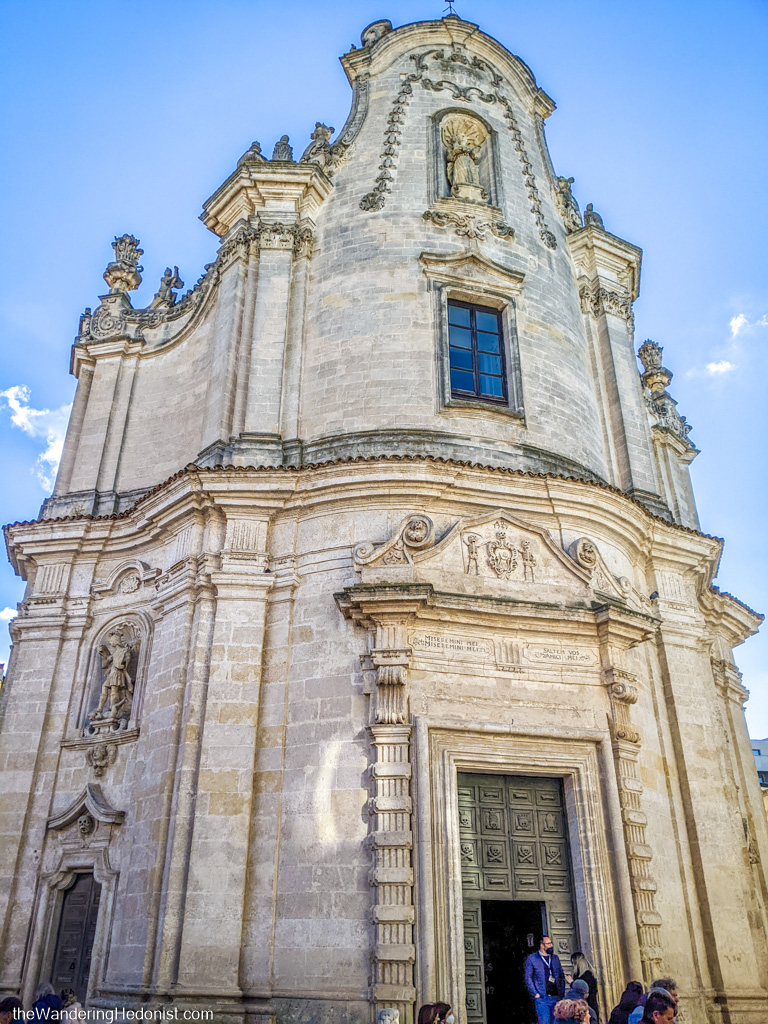







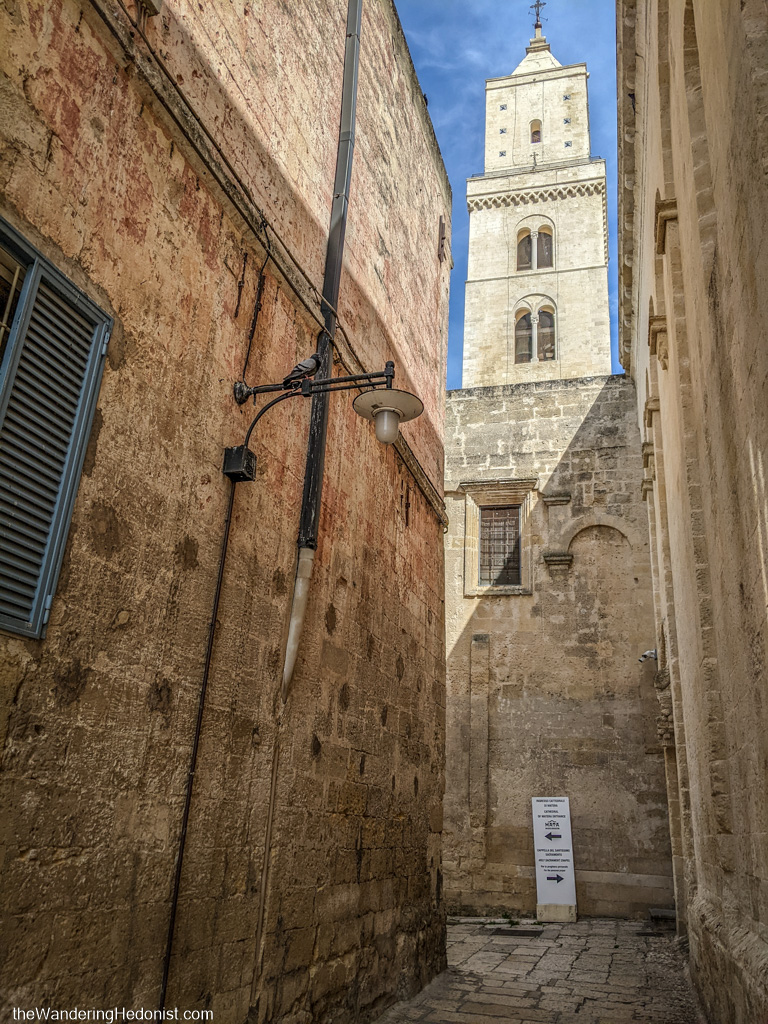
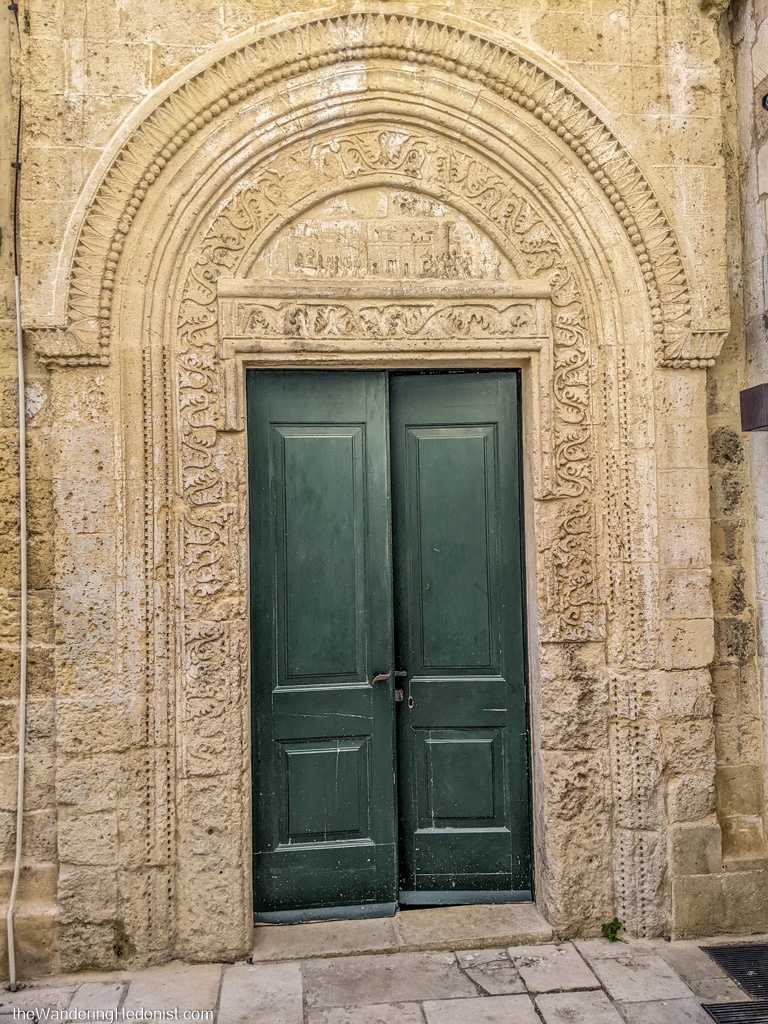
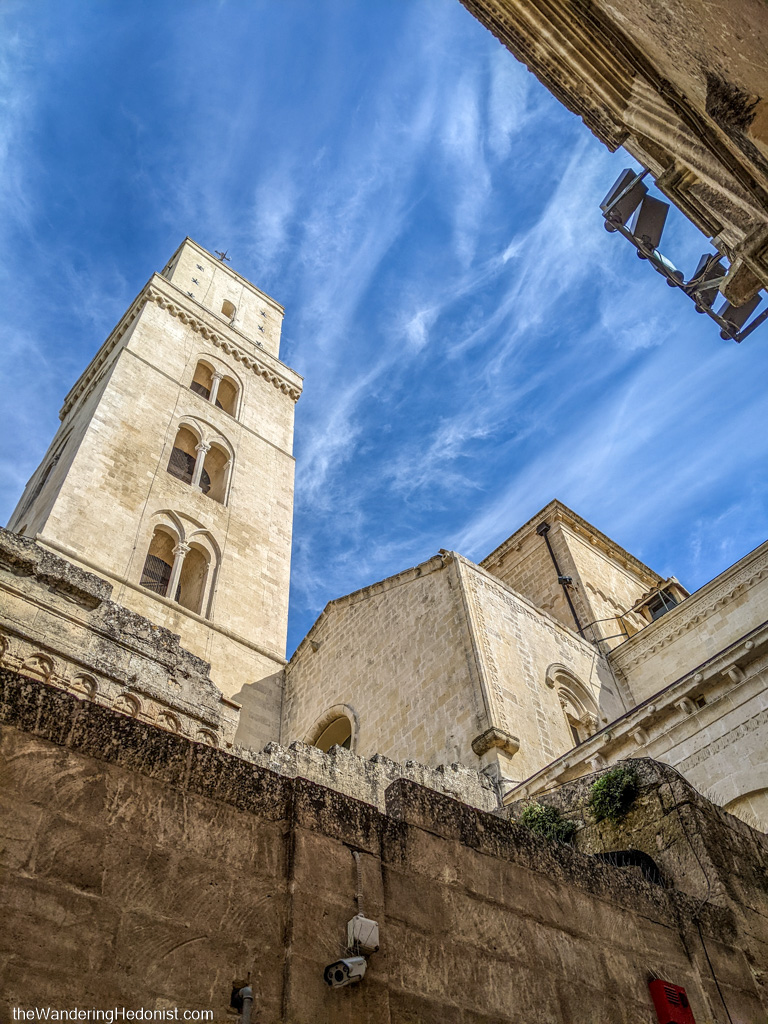










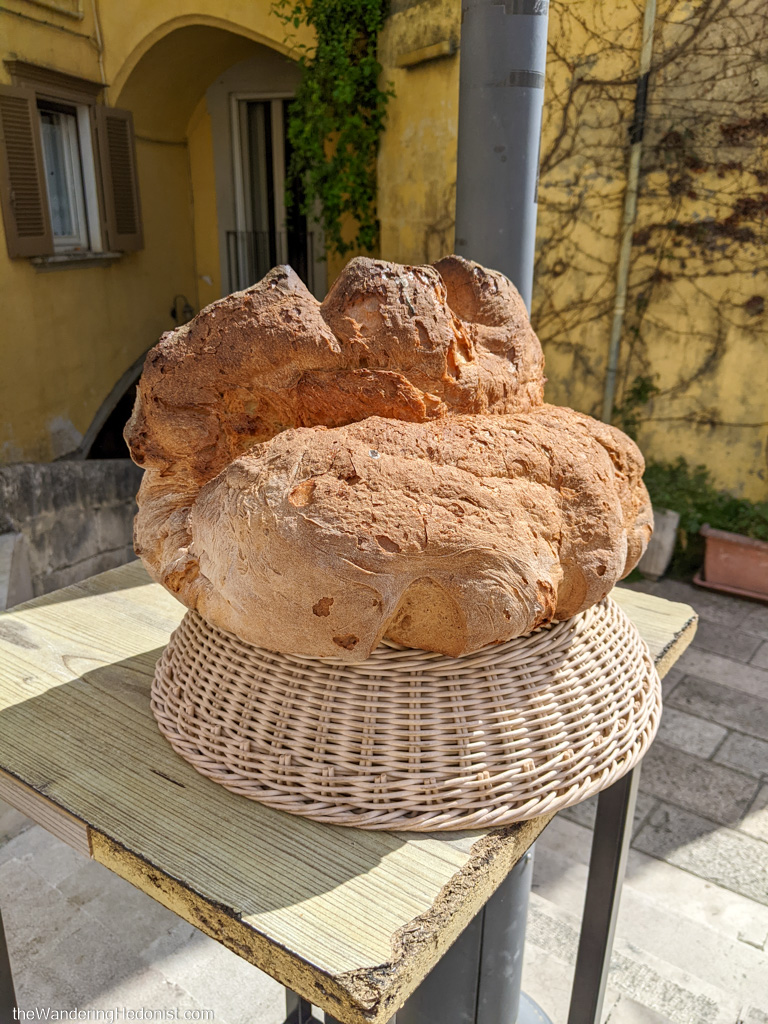



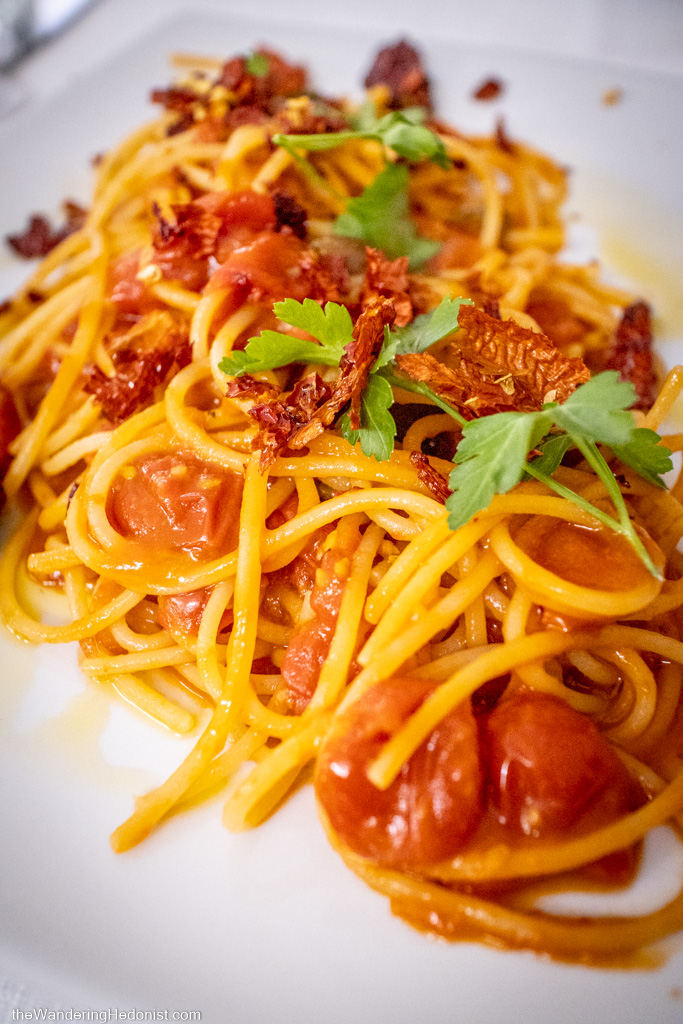









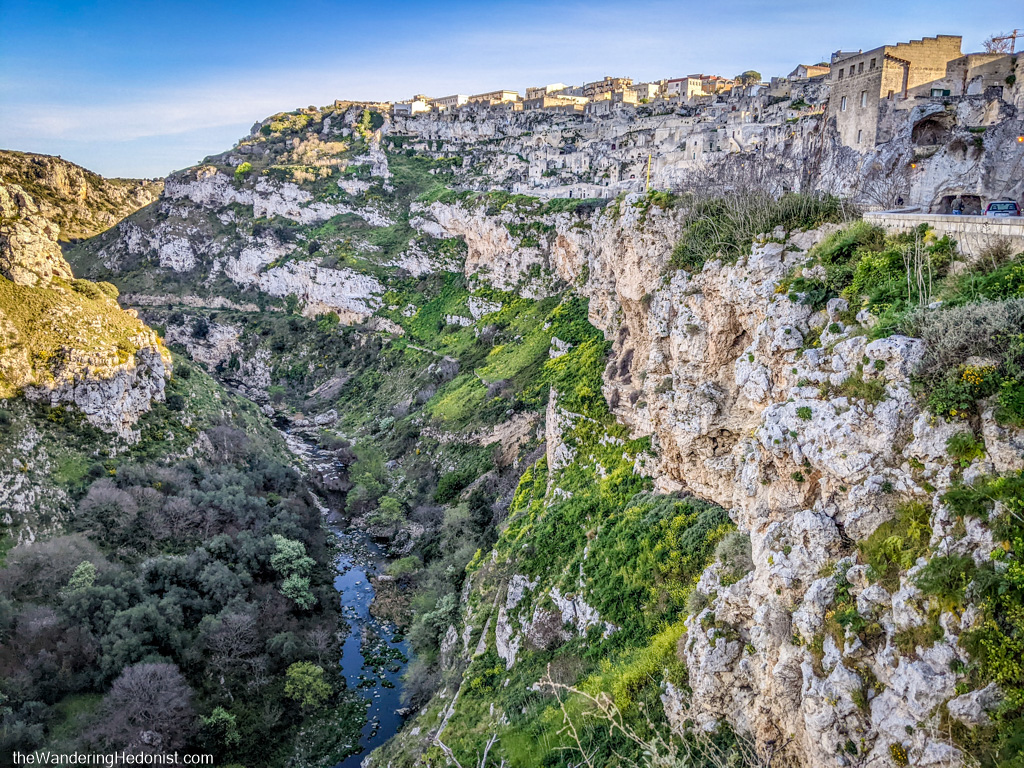









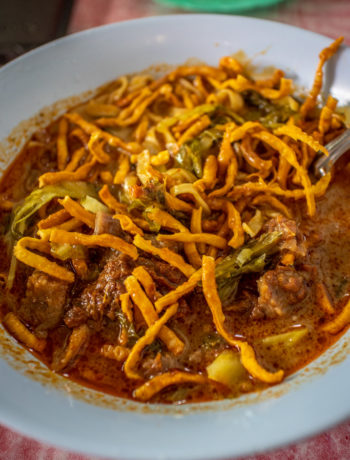
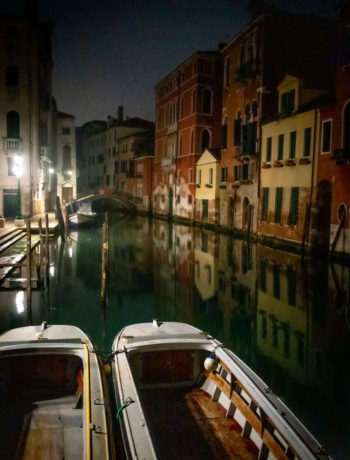
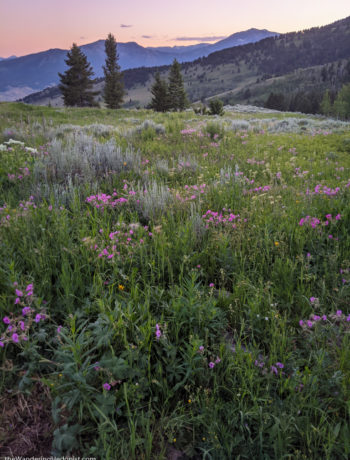
No Comments